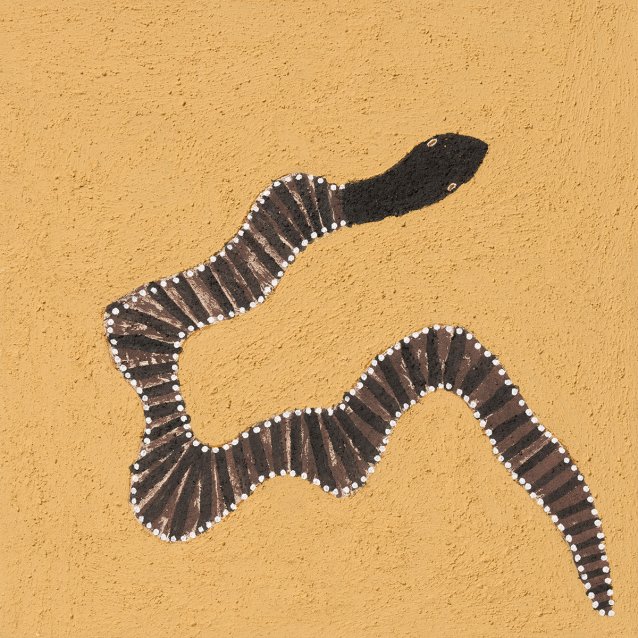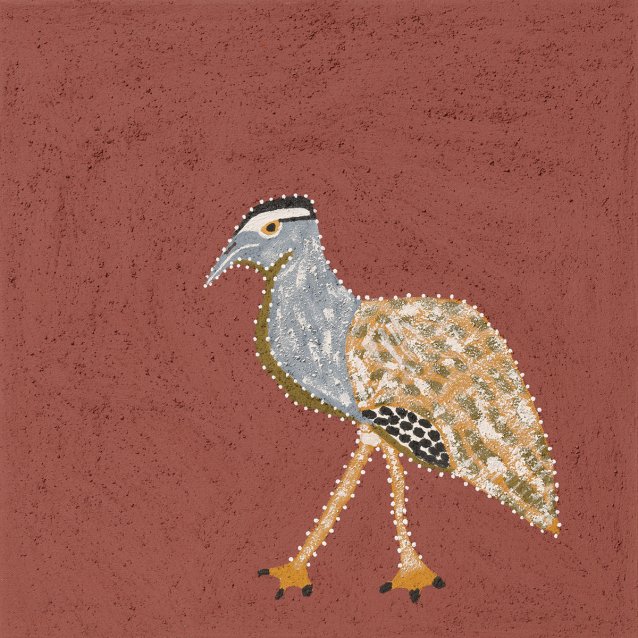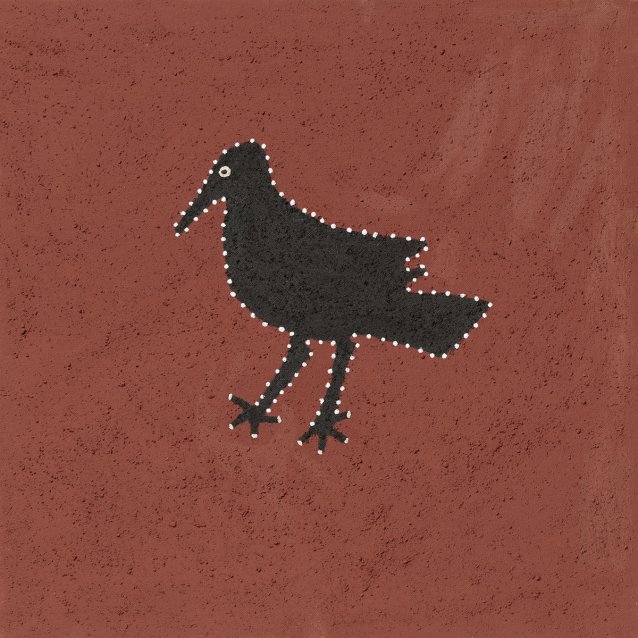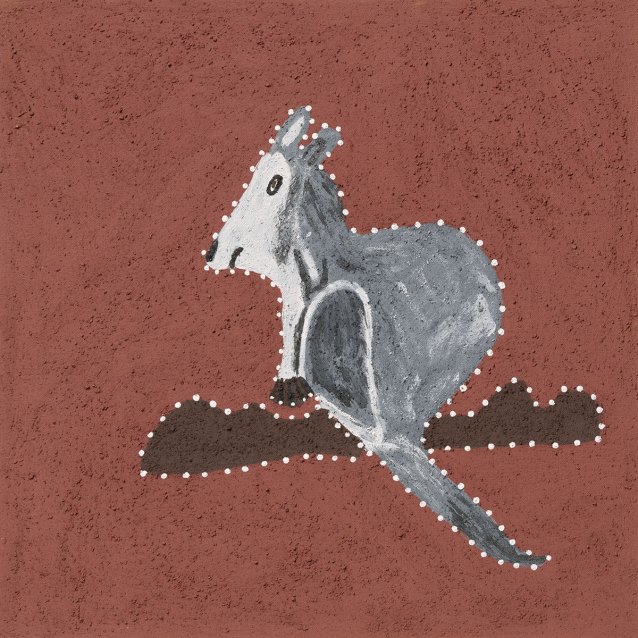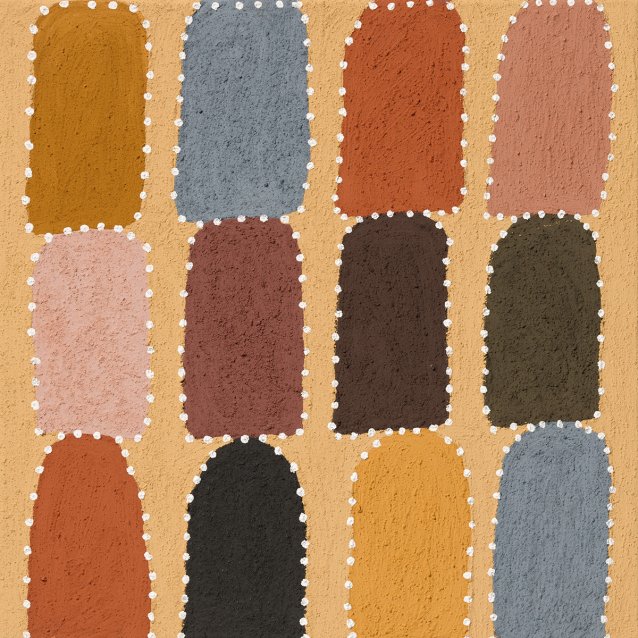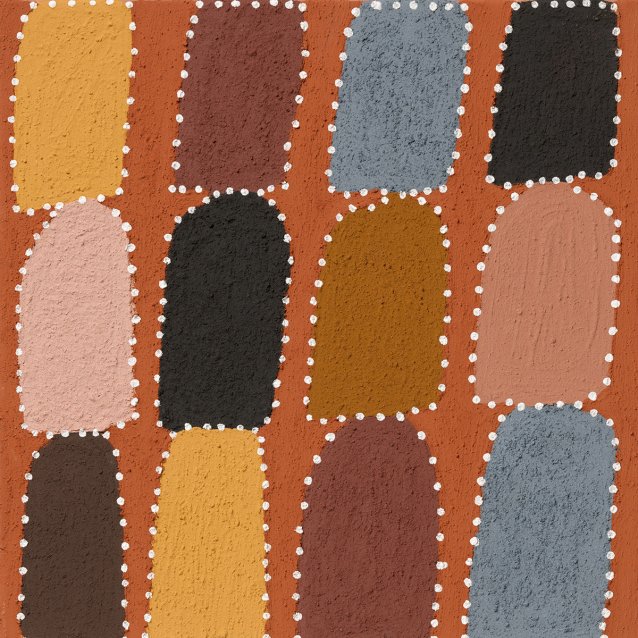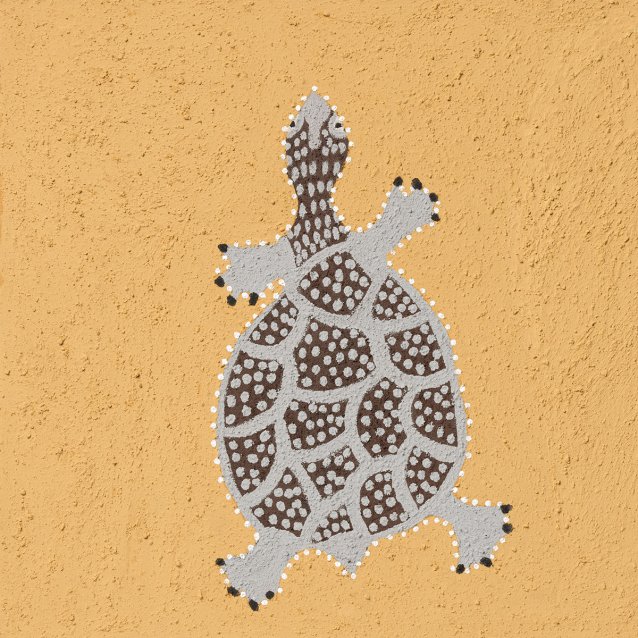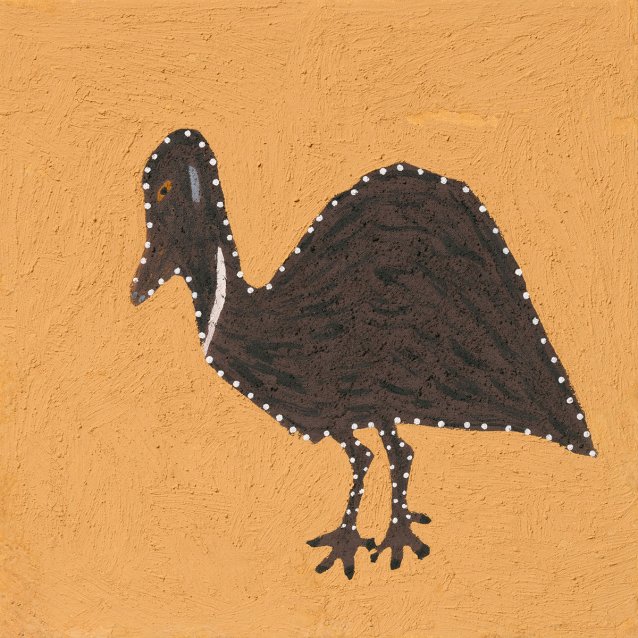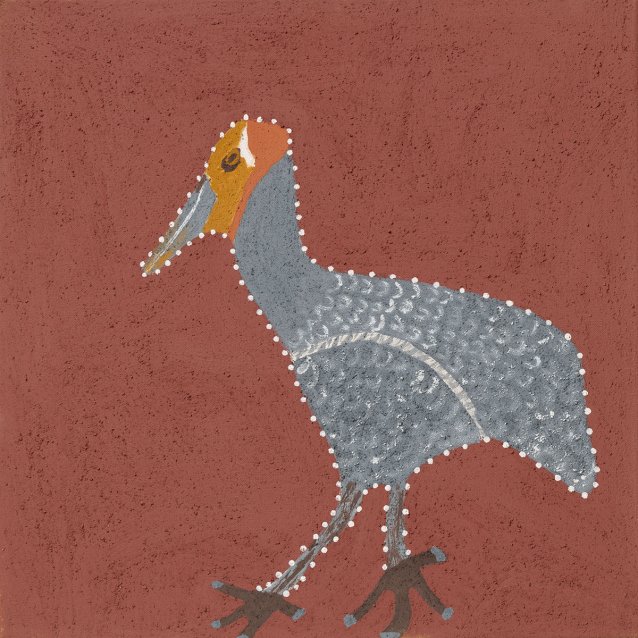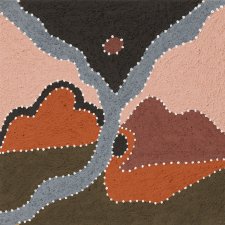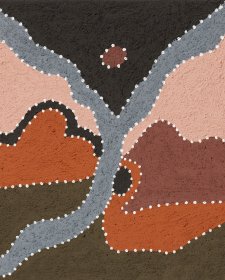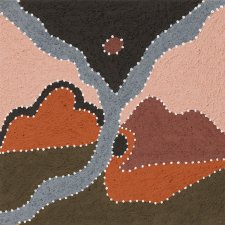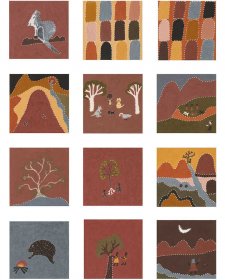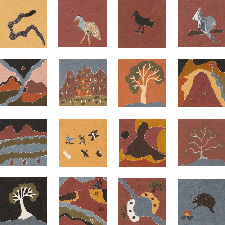“Well, she (Nangari/crow) is important for kids because you know the story of Santa Claus, well our old people they used to say that the crow, we call it Wangganal, that crow is like a Father Christmas; because it used to go out and scavenge for food, and that’s why they been having that idea, that she bin collecting all the presents for kids. There is also that song for it: ‘Wangganaly, Wannganal-y, Gooloo Gooloo Yarra Ma Nguyu… Bulbambi Binbijayu … Wangganal-y , berrawerra yinbijayu’. That means, they are getting happy that he bring ‘em presents and send them out for Christmas holiday at the school. Nangari is also a Gija skin, and we got ‘em dreamtime story for this one up near la Warmun hill. My skin and my sisters’ skin is Nangari, the crow.”
Shirley describes how there are a several reasons why the crow is significant to her and her culture. The first she associates with a special modern day ceremony for school children, that was invented by the elders of Warmun. The very last day of the school year in December is one of celebration, where Wanggana comes to visit all the children, and gives them presents (after giving them a fright). The event, which can be interpreted as
both cruel and kind, is one for all Warmun children. They get to go home with a gift after a special school assembly, where all families are invited.
Nangari is the skin name for Wangganal (the crow) and it is also Shirley’s skin. In Gija kinship systems, Nangari helps define who Shirley is within her wider family and community, and how others may relate to her.
